Oral
Parkinson's Disease: What's New?
ISMRM & ISMRT Annual Meeting & Exhibition • 10-15 May 2025 • Honolulu, Hawai'i

| 08:15 |
Introduction |
|
| 08:27 |
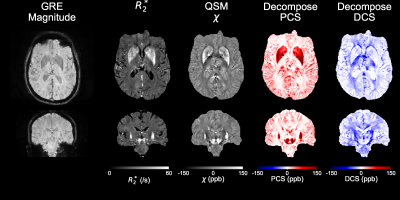 |
0448. Susceptibility
components from DECOMPOSE-QSM reveal dopaminergic and
nigrostriatal degeneration in prodromal alpha-synucleinopathies
O. Kiersnowski, P. Mattioli, L. Argenti, L. Avanzino, F.
Calizzano, A. Diociasi, L. Falcitano, M. Losa, F. Massa, S.
Morbelli, B. Orso, E. Pelosin, S. Raffa, C. Liu, M. Pardini,
D. Arnaldi, L. Roccatagliata, M. Costagli
IRCCS Ospedale Policlinico San Martino, Genoa, Italy
Impact: Paramagnetic and diamagnetic component
susceptibility correlate with DaT-SPECT Z-scores in the
substantia nigra and putamen. Source-separated magnetic
susceptibility holds promise as a biomarker for assessing
the degeneration of the nigrostriatal dopaminergic pathway,
key for evaluating prodromal and overt
alpha-synucleinopathies.
|
| 08:39 |
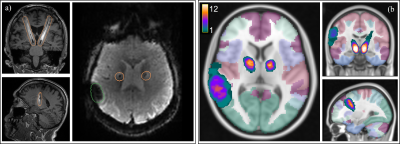 |
0440. Deep
Brain Stimulation in Parkinson’s disease: from the MRI artifacts
recognition tool artDBS to resting-state fMRI graph analysis

E. Cantoni, G. Sighinolfi, I. Cani, F. Bartiromo, G.
Vornetti, T. Kaswalder, G. Calandra-Buonaura, L.
Baldelli, P. Mantovani, P. Berardi, G. Giannini, A.
Conti, C. Tonon, R. Lodi
IRCCS Istituto delle Scienze Neurologiche di Bologna, Bologna, Italy
Impact: This MRI study introduces a novel method for
precise DBS artifact recognition, and advances our
understanding of Parkinson’s disease by revealing new
insights into the role of resting-state brain and cerebellar
functional networks in DBS-treated patients.
|
| 08:51 |
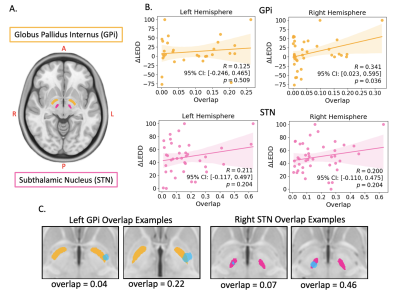 |
0441. Leveraging
Post-Operative Imaging in Deep Brain Stimulation to Relate
Activated Tissue Volumes with Parkinson’s Disease Outcomes

D. Schoen, R. Khalifa, J. Mehta, S. Deutsch, S. Walter,
S. Wang, I. Bledsoe, J. Ostrem, P. Starr, D. Wang, M.
Morrison
UCSF, San Francisco, United States
Impact: This study highlights the utility of
post-operative T1 in deep brain stimulation (DBS), offering
insights into optimal activation zones for personalized DBS
programming to enhance clinical outcomes in subthalamic and
pallidal DBS for Parkinson’s disease symptom management.
|
| 09:03 |
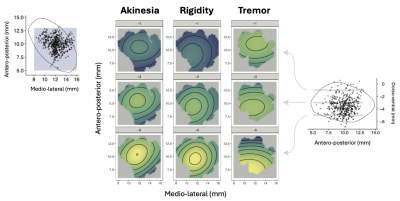 |
0442. Towards
symptom-specific targeting for subthalamic deep brain
stimulation in patients with Parkinson's Disease
N. Tempier, G. DeFrance, M. D. N. Santin, G. Temiz, E.
Hainque, E. Bardinet, B. Lau, C. Karachi
Paris Brain Institute, Paris, France
Impact: These findings underscore STN heterogeneity,
highlighting symptom-specific DBS targeting to enhance motor
outcomes in Parkinson’s disease. Emphasizing individualized
targeting strategies addresses patient variability,
optimizing therapy, minimizing side effects, and prompting
further exploration into personalized DBS for improved
symptom management.
|
| 09:15 |
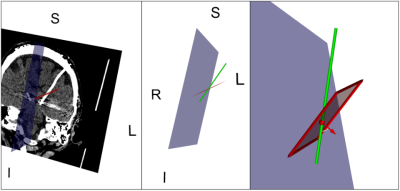 |
0443. Deep
Brain Stimulation Electrode Deviations are Associated with Brain
Stiffness Interfaces Measured by Magnetic Resonance Elastography
C. Wu, M. Alizadeh, M. Kramer, M. Kroen, R. Ziechmann, F.
Mohamed, Q. Wu, C. Johnson
Thomas Jefferson University, Philadelphia, United States
Impact: These findings could lead to the development of
MRE-based preoperative planning tools, improving DBS
accuracy and reducing revision surgeries. The study provides
new insights into brain stiffness interfaces, opening
avenues for further exploration of their role in
stereotactic surgery.
|
| 09:27 |
 |
0444. Display
of the Swallowtail Sign at 7T: SWI is not the wisest choice
R. Chen, Q. Li, D. Wang, S. Li, Y. Hsu, W. Liao
Xiangya Hospital, Central South University, Changsha, China
Impact: Compared to the commonly used SWI sequence (at
1.5T and 3T) for observing the Swallowtail Sign, DESS
(echo2) and FLAIR_SPACE can display the Swallowtail Sign
more clearly at 7T.
|
| 09:39 |
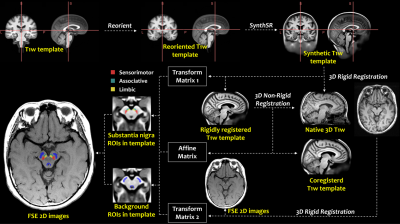 |
0445. Regional
Neuromelanin Reduction in the Substantia Nigra in Different
Subtypes of Parkinson’s Disease
H. Li, X. Shao, J. Wang, J. Jia, J. Dai, X. Zhao, Y. Liu, Z.
Chen, H. Wang, L. Jin
Fudan University, Shanghai, China
Impact: These findings suggest underlying pathological
mechanisms for PD subtypes and indicate that regional
neuromelanin loss is associated with motor and cognitive
impairments.
|
| 09:51 |
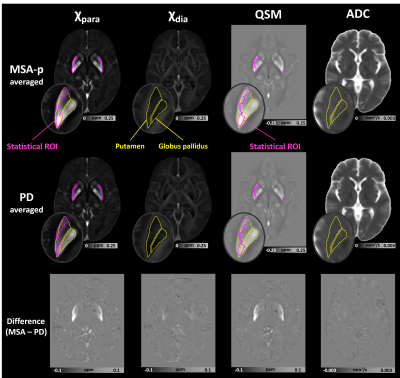 |
0446. Superior
diagnostic value of susceptibility mapping over ADC in
differentiating multiple system atrophy from Parkinson’s disease

B. Moon, J. Yoon, K. Min, J. Choi, J. Lee, B. Sohn
Seoul National University, Seoul, Korea, Republic of
Impact:
Diagnostic accuracy of susceptibility map for differentiating MSA-p from PD was evaluated, revealing higher accuracy when using susceptibility map-based thresholding compared to ADC-based qualitative assessment. We propose clinically important regions for distinguishing MSA-p when utilizing susceptibility-based imaging. |
| 10:03 |
 |
0447. Neuroimaging
Epicenters Using Multimodal MRI for Exploring Potential Sites of
Pathogenesis in Parkinson's Disease
X. Duanmu, J. Wen, J. Qin, Q. Zheng, W. Yuan, Z. Zhu, C.
Zhou, T. Guo, H. Wu, C. Wu, J. Wu, J. Chen, Y. Zhang, M.
Zhang, X. Guan, X. Xu
Department of Radiology, The Second Affiliated Hospital, Zhejiang University School of Medicine, HangZhou, China
Impact: We developed a reliable method for identifying
the epicenter using multimodal MRI, offering new insights
for exploring the disease's potential sites and their
clinical relevance in PD.
|
The International Society for Magnetic Resonance in Medicine is accredited by the Accreditation Council for Continuing Medical Education to provide continuing medical education for physicians.